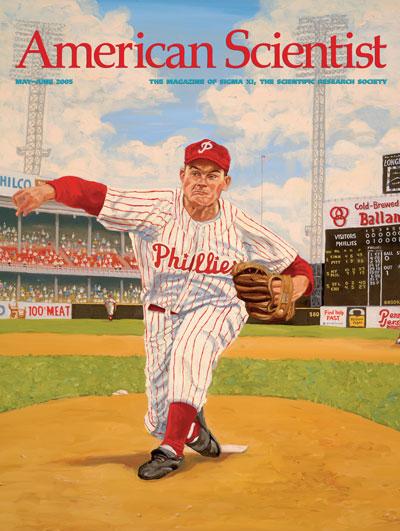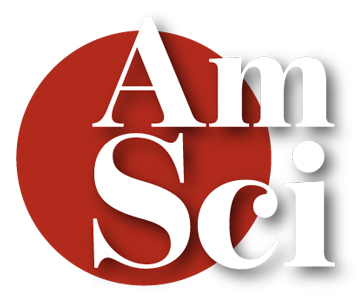Magazine
May-June 2005

May-June 2005
Volume: 93 Number: 3
Baseball pitchers use spin, or lack thereof, to deceive batters about where a pitched ball will cross home plate. Because a batter must begin to swing when a fastball is only two-thirds of the way to the plate, clues about the ball's spin, and therefore trajectory, are crucial to getting a hit. In "Predicting a Baseball's Path," A. Terry Bahill, David G. Baldwin and Jayendran Venkateswaran discuss how a pitcher's grip and delivery affect a ball's spin axis and what information a batter can divine from patterns formed by the ball's seam as it spins. They posit that a successful pitcher will position the seams differently when tossing, for example, a fastball versus a slider. Robin Roberts—as shown in this painting by Dick Perez, official artist of both the Baseball Hall of Fame and the Philadelphia Phillies—was one of the most successful pitchers of his time.
In This Issue
- Agriculture
- Art
- Astronomy
- Biology
- Chemistry
- Communications
- Computer
- Economics
- Engineering
- Environment
- Evolution
- Mathematics
- Physics
- Psychology
- Sociology
- Technology
Science and Religious Fundamentalism in the 1920s
Edward Davis
Communications Evolution Sociology
Religious pamphlets by leading scientists of the Scopes era provide insight into public debates about science and religion
New Ideas About Old Sharks
Susan Turner, Randall Miller
Evolution
A rare fossil sheds light on the poorly understood relationship between early sharks and bony fishes
Polarization of the Cosmic Microwave Background
Matthew Hedman
Astronomy Physics
Astronomers search for clues about the dynamics of the early universe in the ancient afterglow of the Big Bang
The Lion's Mane
Peyton West
Evolution Psychology
Neither a token of royalty nor a shield for fighting, the mane is a signal of quality to mates and rivals, but one that comes with consequences
The Sigma Xi Postdoc Survey
Communications Sociology
Responses from 7,600 postdoctoral scholars shed light on pay, working hours, benefits and more
